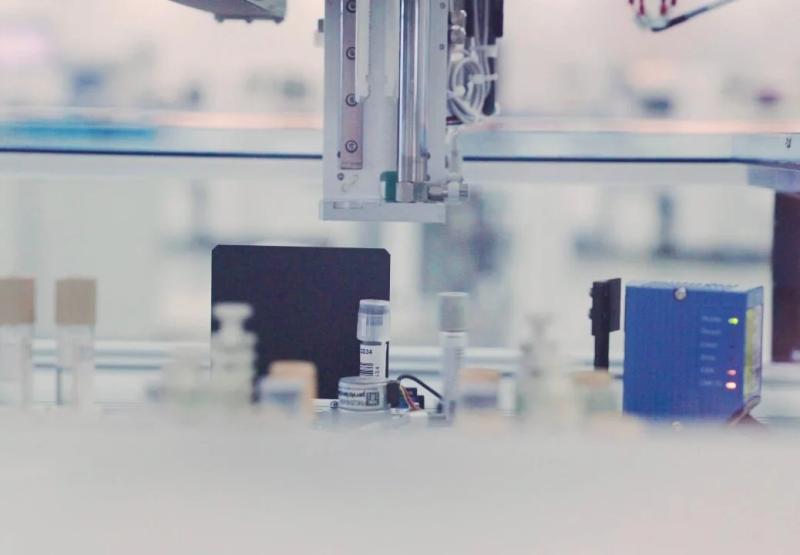
How to be glass smart and choose the right switchable smart glass
How can you be glass smart about smart glass? The demand for switchable glass technology and smart windows is becoming essential. The option is clear
Let me tell you a story about a property owner who had a dilemma. Let's call Geoff. Geoff was building a brand new office space and wanted to make sure it was as energy-efficient and sustainable as possible. As someone who cared deeply about the environment, he knew that the choice of windows would play a significant role in achieving those goals.
Geoff did some research and found out about electrochromic and PDLC windows, both of which had some interesting features. Electrochromic windows could change their tint depending on the amount of sunlight that hit them, while PDLC windows could switch from opaque to transparent with the flip of a switch. He even looked into smart film options to cut down on costs. All of them had their benefits.
However, he was not so keen on the bluish tint that these options produced, so he continued to search for a more suitable switchable glass alternative. That's when he stumbled upon liquid crystal windows, a technology that could change the tint of the glass without any blue tint and was able to change from a light to a dark state instantly.
Geoff was intrigued by the concept but was hesitant about the potential drawbacks. For one, he wasn't sure if the technology was durable enough to withstand the harsh weather conditions in his area. He was also concerned about the upfront cost, as liquid crystal windows were known to be more expensive than other switchable smart glass options.
As he weighed his options, Geoff realized that he needed to find a balance between his desire for energy efficiency and his budget constraints. He also recognized that the windows he chose would have a significant impact on the overall look and feel of the office space.
This is how Geoff came to choose glass smart enough to work with his project.
Smart Glass Overview
Smart glass is a revolutionary technology that has been gaining popularity in recent years. It is essentially glass that can change its properties automatically or with the touch of a button. Smart glass can be used in various applications, including windows, doors, skylights, and partitions.
The benefits of smart glass are numerous. First and foremost, it provides privacy and solar shading on demand without the need for curtains or blinds. This feature makes it ideal for conference rooms, healthcare facilities, and residential settings where privacy is important. Additionally, smart glass can reduce energy costs by blocking out UV rays and excess heat from the sun during hot weather.
When choosing smart glass, there are several factors to consider such as cost, durability, and functionality. Some smart glasses offer more features than others like automatic shading while some may only switch between clear and opaque modes manually.
Overall, investing in smart glass brings many advantages such as increased privacy control, improved energy efficiency, and aesthetic appeal to your space which ultimately makes it worth considering when updating your home or business space.
Different types of Glass-Smart Technology - Smart Film, Electrochromic, PDLC, and Liquid Crystal
There are several types of smart glass available in the market, each with its unique features and benefits. The first type is electrochromic glass, which uses an electric current to change the tint of the glass. This type of smart glass is used for privacy applications and can be controlled through a switch or remote control. It uses a chemical reaction to change the glass state, but due to the limitations of the technology, it will usually have a blue or yellow tint.
Another type of smart glass is thermochromic glass, which changes color based on temperature. This type of glass is commonly used in greenhouses and conservatories to regulate heat levels. It also helps reduce energy consumption by blocking out sunlight during peak hours, but cannot be controlled by an external source for light control. Therefore it can not be considered intelligent glass.
Lastly, there's SPD (Suspended Particle Device) that features tiny particles suspended within a film between two layers of conductive material. When an electric current passes through the PDLC film, the particles align themselves and block light from passing through it. This type of smart switchable glass technology is widely used for commercial applications such as conference rooms, retail stores, and hospitals. However, it too usually has a blue tint and privacy PDLC smart glass solutions usually have a milky look and cannot go completely clear.
And finally, there is Liquid Crystal Glasing like the eyrise s350 and the eyrise i350. Instead of using a switchable film, this Greentech uses liquid crystals sandwiched between two layers of glass to control light or the amount of light that enters the building. that have color transmission, much like the pro display in your smartphone or HD computer monitor. This is truly a high performance glazing since it switches faster than other options. This is why it is being used more and more for bespoke projects (see here and here for examples).
Choosing the right smart glass comes down to identifying your specific needs and goals you want to achieve with it. Whether it's privacy control or energy efficiency or improved aesthetics, understanding what each type offers will help you make an informed decision on what best suits your requirements.
Cost Considerations
One of the main factors to consider when choosing smart glass is the cost. Dynamic glass can be more expensive than traditional glass due to its advanced technology and features. However, it's important to weigh the benefits of smart glass against its costs, such as energy use, energy savings and enhanced privacy. Smart glass costs can be wildly different, but there are many things to consider other than initial costs.
Another aspect of cost consideration is installation. Smart glass may require specialized installation and wiring, which can add extra costs to the overall project. It's important to work with experienced professionals who can provide accurate quotes for both materials and labor. However, most smart glass wiring can be integrated into existing framing.
Finally, maintenance and repairs should also be factored into cost considerations. While smart glass is designed for durability and longevity, and using this window technology may be more cost-effective in the long run than traditional blinds since there are no moving parts or maintenance fees. Blinds may require occasional repairs or cleaning over time whereas the best smart glass technologies do not.. It's important to budget for these potential expenses in order to ensure that your investment in smart glass remains worthwhile in the long run.
Installation Process - How hard is it to install smart windows?
The installation process of smart glass is a crucial step in the overall functionality and performance of the technology. It is important to consult with a professional installer who has experience working with this type of technology. The installer will assess the space where the smart glass will be installed, take measurements, and ensure that all necessary electrical components are in place. Some smart glass window companies do not add support during installation. Other companies like eyrise will always have support staff on hand throughout the installation to make sure everything is installed properly.
Once the assessment is complete, the actual installation process can begin. This typically involves removing any existing window or door panels and replacing them with custom-fit smart glass panels. The wiring for electrically tintable windows must also be properly installed during this process.
Finally, once everything is in place and connected correctly, it's essential to test the system thoroughly to make sure it's working as expected. This includes testing both manual controls and automated features such as timers or sensors that trigger changes in tinting based on daylight levels or other environmental factors. By following these steps carefully - from consultation through installation - you can ensure that your new smart glass system provides optimal performance for years to come.
Benefits of Switchable Smart Glass
Firstly, smart glass offers an array of benefits to home and office owners. It provides privacy with a simple flick of a switch, making it perfect for conference rooms or bathrooms. Additionally, it reduces glare and heat from the sun while still allowing natural light in, which can save money on energy bills during warmer months.
Secondly, smart glass also has health benefits. It blocks harmful UV rays and infrared that can cause skin cancer and damage furniture over time. This technology is especially useful for individuals who work indoors as it replicates the positive effects of natural sunlight while blocking out the negative aspects.
Lastly, smart glass is highly customizable to suit your specific needs. From different levels of opacity to various colors and patterns, there are endless possibilities when choosing your smart glass. With so many benefits available at your fingertips, choosing the right smart glass can be an easy way to upgrade any space while improving overall well-being.
Questions to Ask the Manufacturer before choosing switchable glass
1. What is the manufacturing process of smart glass? - This question will give you an idea of how the manufacturer goes about producing their glass products. The answer can help you determine if they have quality control measures in place, what type of equipment and materials they use, and if they adhere to environmental regulations.
2. Does the smart glass have a tint when activated? Is there a blue or yellow tint or does it provide a clear view? Do the windows use a laminate applied to the glass that can peel off? Does it give you access to natural light?
3. How does your smart glass technology work? - It’s important to understand the technology behind the smart glass to identify its potential benefits for your needs as a buyer. Factors such as energy efficiency, privacy protection, and ease of use are all affected by the type of technology used in production.
4. Can you provide references or samples from customers who have purchased smart glass? - Receiving feedback from previous customers is a valuable tool that can help you make an informed decision on whether this product is suitable for your project requirements. Samples also allow you to see first-hand if the quality of their product aligns with your expectations.
5. Do you offer technical support or maintenance services? - Smart glass requires careful installation and maintenance procedures to ensure it functions correctly throughout its lifespan. Knowing whether a manufacturer provides these essential services can save time and money down the line while ensuring proper operation.
6. What certifications do your products hold?- Certifications are important when buying any product because they indicate that it meets certain standards set by independent regulatory organizations such as ASTM International, UL Standards, or FM Global Standards in this case for smart glasses products taking into account fire resistance, and durability among other factors.
Switchable technology is Glass Smart - Other ways to use smart glass
Did you know that you can use smart glass to be glass smart? What this means is that some smart glass has other uses. For instance, you can use the eyrise i350 instant privacy glass as a projection screen. The liquid crystals can create a frost effect that will allow for complete privacy, and it can do something other smart windows can't: become a projection screen. Unlike a typical glass window, you can replace existing glass with privacy glazing to create a screen you can use as a projection screen. The smart glass works by using liquid crystals to scatter the light, creating an opaque screen that can be used to project images. This can be done no matter the size of the glass, creating a smart glass application that can wow any participant in a meeting. This can be used in any residential and commercial project.
Conclusion: What type of glass is right for me?
In conclusion, choosing the right smart glass for your needs can be a daunting task. There are many factors to consider such as cost, functionality, and energy efficiency. However, it is important to keep in mind that smart glass technology is constantly evolving and improving.
When making your decision, take into account the specific features that you require for your space. For example, if you need privacy but also want natural light to come through, a switchable privacy glass may be the best option for you. On the other hand, if energy efficiency is a top priority then electrochromic or thermochromic glass may be more suitable.
Ultimately, investing in smart glass technology can have numerous benefits including increased comfort and productivity levels as well as cost savings on energy bills. So do your research and choose wisely – it could make all the difference in creating a more efficient and enjoyable living or working environment.
So what did Geoff choose? After careful consideration and a few sleepless nights, he ultimately decided to go with the liquid crystal windows. Although they were more expensive than other options upfront, he believed that they would be worth the investment in the long run since they had a lower carbon footprint than other options like mechanical blinds. Geoff was confident that they would not only provide energy savings but also enhance the aesthetic appeal of the office space.
Looking back, Geoff realized that the decision was not an easy one, but he felt proud of the choice he made. He felt good knowing that he had made an environmentally conscious decision and that he had taken steps to ensure that his office space was as sustainable and energy-efficient as possible.











